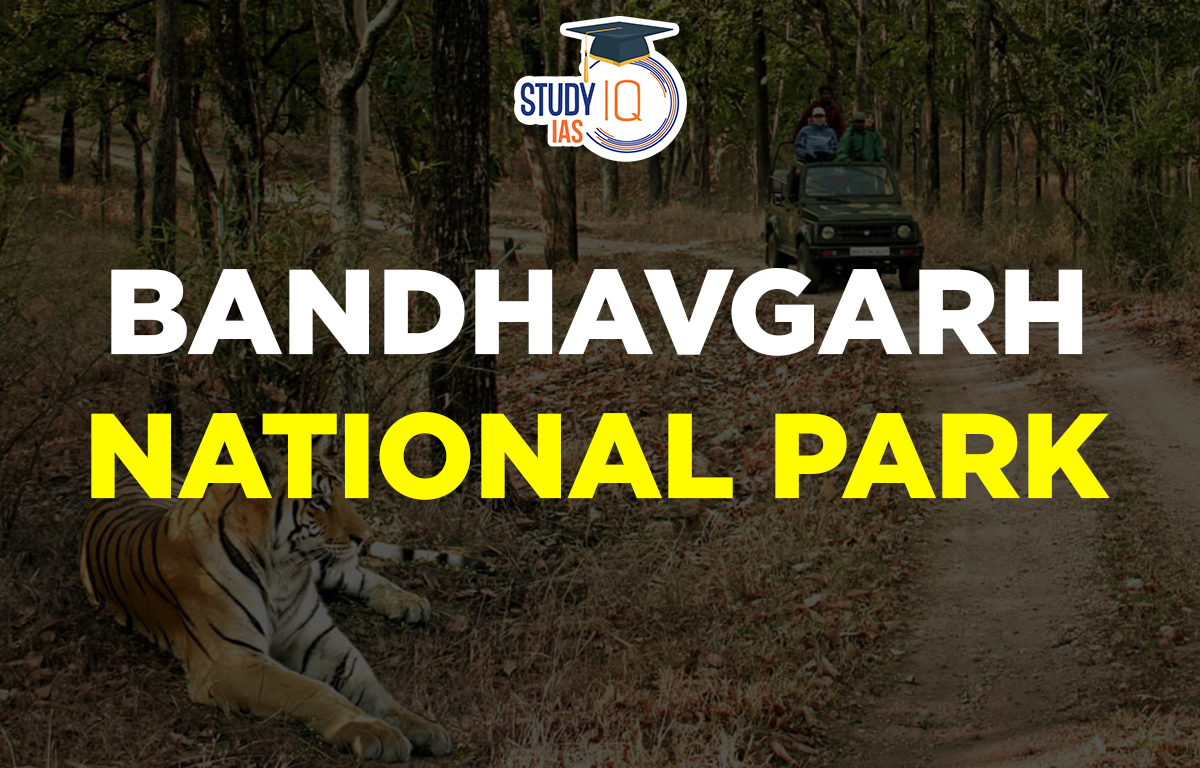Table of Contents
Madhya Pradesh Chief Minister Mohan Yadav suspended two senior forest officials in connection with the death of 10 elephants in the Bandhavgarh Tiger Reserve (BTR).
About Bandhavgarh National Park
- Established: Bandhavgarh National Park was declared a national park in 1968. In 1993, it was designated as a Tiger Reserve under the Project Tiger initiative.
- Location: Umaria district of Madhya Pradesh.
- Area: The park covers an area of around 1,536 square kilometres, including a core area of 716 square kilometres and a buffer zone of 820 square kilometres.
- Terrain: Bandhavgarh is characterised by a mixed topography of hills, valleys, rivers, and marshes.
- The park is surrounded by the Vindhya and Satpura ranges, and the terrain varies from steep ridges and undulating hills to open meadows.
- Bandhavgarh Fort: An ancient fort, estimated to be over 2,000 years old, stands within the park atop a hill.
- Flora: Bandhavgarh boasts dense forests of Sal trees (Shorea robusta), which are the dominant vegetation type, along with mixed forests featuring Bamboo, Saj (Terminalia tomentosa), Arjun (Terminalia arjuna), and Mahua (Madhuca indica).
- Grasslands and open meadows provide grazing grounds for herbivores.
- Fauna:
- Tigers: Bandhavgarh is famous for its high density of Bengal tigers.
- Leopards: The park also supports a healthy population of leopards.
- Other Mammals: Wildlife in Bandhavgarh includes Indian bison (gaur), sloth bears, sambar deer, chital (spotted deer), wild boars, and nilgai. The Indian wolf and the rare blackbuck are occasionally spotted in the park.
- Birds: Over 250 species of birds can be found in the park, including eagles, vultures, flycatchers, and various migratory species, making it a popular destination for birdwatching.
- Mythological Significance: The name “Bandhavgarh” is derived from two words: “Bandhav,” meaning brother, and “Garh,” meaning fort.
- According to local legends, the fort was gifted to Lakshmana, the brother of Lord Rama, by Rama himself, linking it to Hindu mythology.
- Wildlife Reintroduction Efforts: In the early 1980s, the park underwent a successful project to reintroduce gaur (Indian bison) after their population dwindled due to disease.
- Rich Archaeological Sites: The park contains ancient man-made caves, some of which date back to the 1st century BCE. These caves feature inscriptions and ancient rock carvings, adding archaeological value to the area.
Bandhavgarh National Park History
A famous location with significant historical significance is Bandhavgarh. Bandhavgarh is the precise combination of the words Bandhav (Brother) and Garh (Fort). The reserve is known as Bandhavgarh because it contains an ancient fort that legend has it that Lord Rama gave to his younger sibling Lakshmana.
The history of the Bandhavgarh area also reveals the main dynasties that ruled there, such as the Sengars, the Kalchuris, and the Baghels. The Maharajas of Rewa used to hunt in the Bandhavgarh area until 1968. The state government then turned the region into a national park after the royal family had given it to them. As part of Project Tiger, the Bandhavgarh National Park was designated a tiger reserve in 1993.
Bandhavgarh National Park Features
The area’s most notable hill, which is said to have been given to Lord Rama’s brother Laxman by the latter to keep a watch on Lanka, inspired the park’s name. (Bandhav means brother, and Garh means fort). The forest is home to numerous deer species and a sizable breeding population of leopards. Due to its chances of seeing tigers, Bandhavgarh National Park draws the most tourists.
Its varied flora, which ranges from tall grasslands to thick Sal forests, makes it the perfect home for a variety of animals and birds. Nilgai, Chausingha, Chital, Chinkara, Wild Boar, and, on rare instances, a Fox or Jackal, are additional attractions. Experts in forests estimate that there are over 250 species of birds, over 80 species of butterflies, and numerous animals.
Also Read: Kanha National Park
Bandhavgarh Tiger Reserve
Madhya Pradesh’s Umaria region is home to Bandhavgarh National Park. In 1968, Bandhavgarh was designated as a national park; in 1993, it was changed to a tiger reserve. The most notable hillock in the region, which was allegedly given by the Hindu Lord Rama to his brother Lakshmana to keep an eye on Lanka, is where the park gets its name. Hence, Bandhavgarh, which means “Brother’s Fort” in Sanskrit.
Bandhavgarh National Park UPSC
Madhya Pradesh, a state in northern India, is home to Bandhavgarh National Park. Royal Bengal tigers are well-represented in this biodiverse forest, particularly in the central Tala zone. Deer, leopards, and white tigers are other creatures. Numerous bird species, including eagles, can be found in the area’s mixture of tropical woodland, Sal trees, and grassland. Students can read all the details related to UPSC visiting the official website of StudyIQ UPSC online Coaching.


 Goods and Services Tax (GST), Objectives...
Goods and Services Tax (GST), Objectives...
 World Oceans Day 2025, History, Theme, S...
World Oceans Day 2025, History, Theme, S...
 World Environment Day 2025, Theme, Histo...
World Environment Day 2025, Theme, Histo...





















